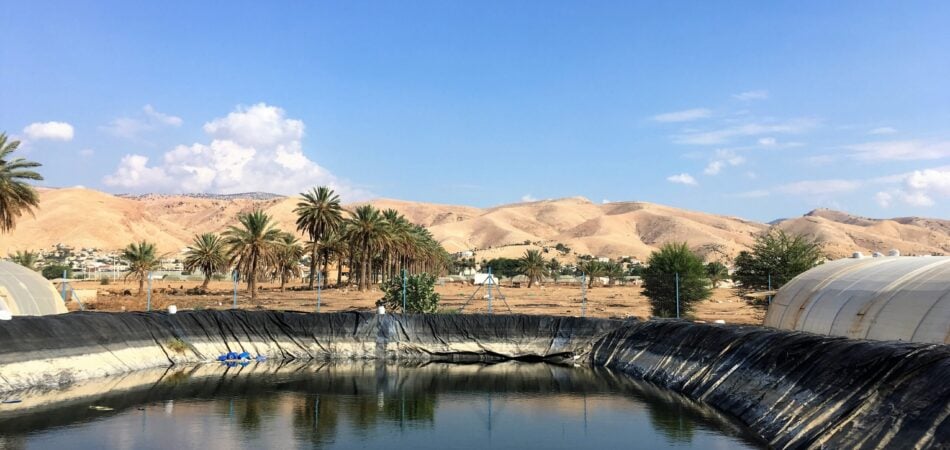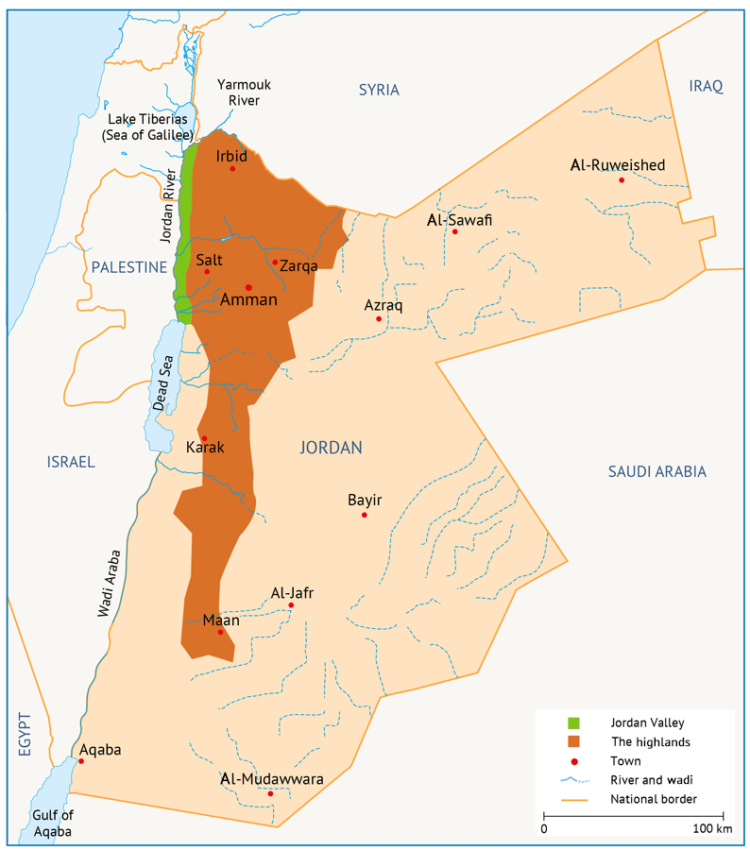
Water in Jordan is supplied from three main resources: groundwater (about 59%), surface water (about 27%) and the rest from treated wastewater (around 14%) (see Water Resources).[1] Competition between the agricultural, domestic and industrial sectors is strong and growing, especially as demand continues to increase and the availability of fresh water decreases.
Water use per sector
Water use varies per sector. The agricultural sector has always been the main water user (ranging from highs of over 70% at the beginning of this century to about 53% in 2013 and to 45% in 2017), followed by the domestic sector (rural and urban households) (about 52% in 2017) and the industrial sector (mainly potash and phosphate industries) (about 3%) [2] (Table 1 and Figure 1).
Figure 1. Water use by sector in 2017. Source: MWI.
Table 1. Water uses and resources in Jordan in 2017. Source: MWI.
| Uses / Resources MCM | Surface water | Groundwater | Treated wastewater | Total |
| Domestic | 131.3 | 338.4 | 0 | 469.7 |
| Agriculture | 154.4 | 253.2 | 144.2 | 551.8 |
| Industry | 2.4 | 27.2 | 2.5 | 32.1 |
| Total | 288.1 | 618.8 | 146.7 | 1053.6 |
Agricultural water use and irrigation development
Rapid population growth in the 1960s, 1970s and 1980s led the Jordanian government to implement a food security strategy, which in turn led to a sharp rise in water use in the government-supported agricultural sector. However, instead of decreasing use, the government’s water policy for many years focused on increasing supply (so-called supply management).[3] Agriculture in Jordan requires intensive irrigation, as only an estimated 5% of the land receives enough rainfall to support agriculture naturally.
In 2017, about 551.8 MCM were used by the agricultural sector. Of those, 144.2 MCM came from treated wastewater, 253.2 MCM from groundwater resources and 154.4 MCM from surface water resources.[4]
Extensive infrastructure was built to supply the country’s irrigation network, centred around the King Abdullah Canal in the Jordan Valley and several large dams. Irrigated agriculture was first developed in the Jordan Valley, where it used water from the Jordan River and the Yarmouk River as well as side wadis. The Jordan Valley Authority was assigned responsibility for the operation and development of this irrigation area in 1977 (Map 1).
[1] MWI (Ministry of Water and Irrigation), 2017. ‘Jordan Water Sector Facts and Figures 2017’.
[2] Ibid.
[3] Yorke, V, 2013. ‘Politics matter: Jordan’s path to water security lies through political reforms and regional cooperation’. NCCR Trade Regulation, Working Paper No. 2013/19; Hussein, H, 2018. ‘Tomatoes, tribes, bananas and businessmen: An analysis of the shadow state and of the politics of water in Jordan.’ Environmental Science & Policy 84: 170-176; Hussein, H, 2018. ‘Lifting the veil: Unpacking the discourse of water scarcity in Jordan.’ Environmental Science & Policy 89: 385-392.
[4] MWI (Ministry of Water and Irrigation), 2017. ‘Jordan Water Sector Facts and Figures 2017’.

